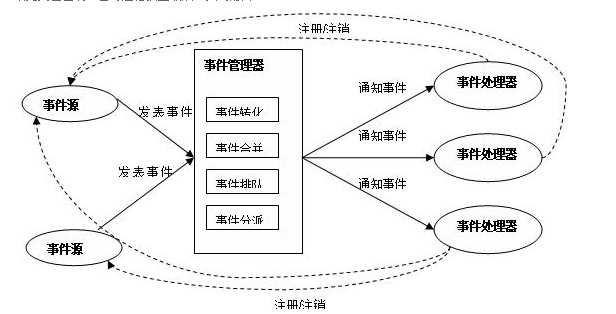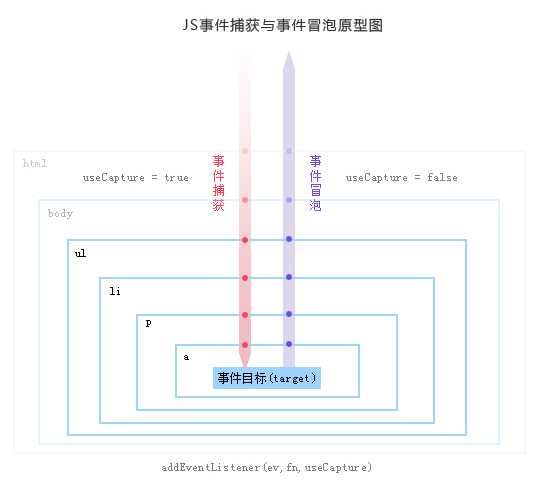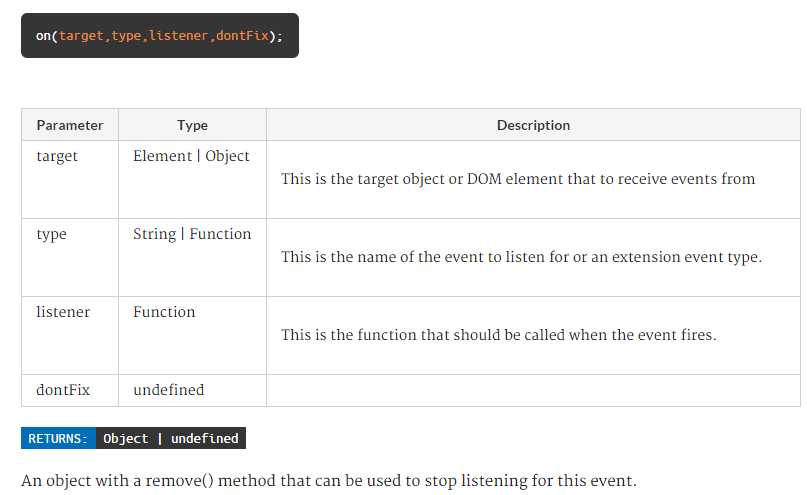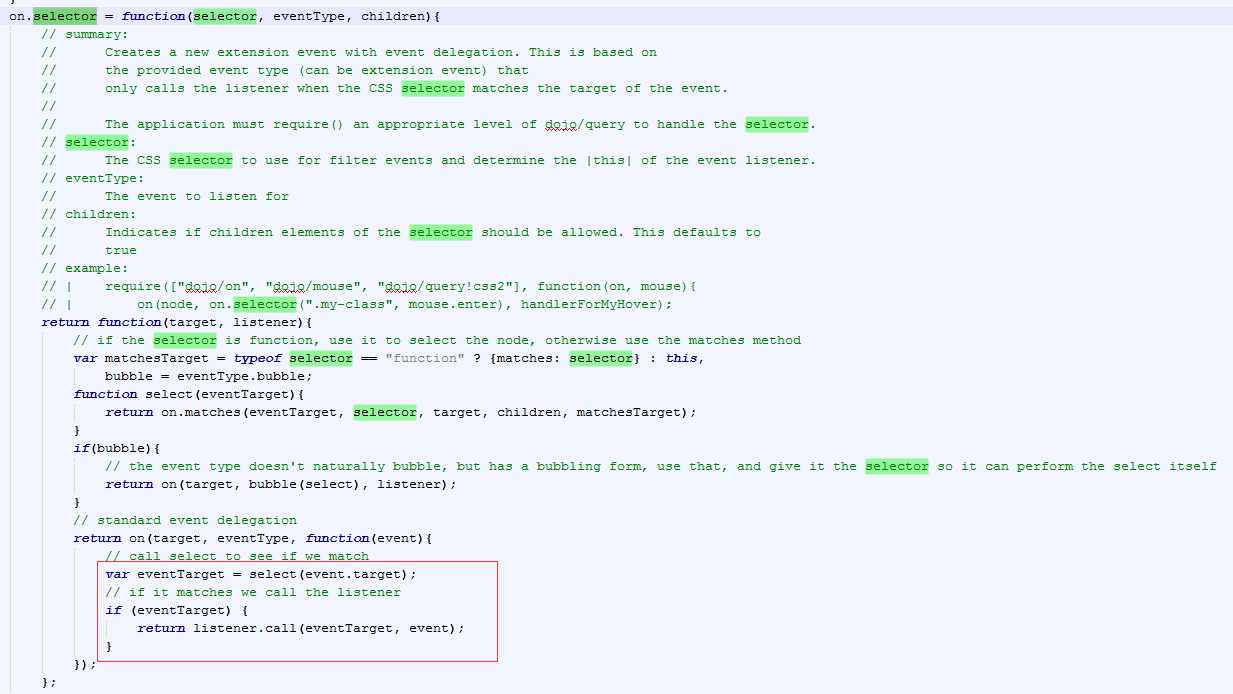标签:
什么是事件驱动?
事件驱动编程是以事件为第一驱动的编程模型,模块被动等待通知(notification),行为取决于外来的突发事件,是事件驱动的,符合事件驱动式编程(Event-Driven Programming,简称EDP)的模式。
何谓事件?通俗地说,它是已经发生的某种令人关注的事情。在软件中,它一般表现为一个程序的某些信息状态上的变化。基于事件驱动的系统一般提供两类的内建事件(built-in event):一类是底层事件(low-level event)或称原生事件(native event),在用户图形界面(GUI)系统中这类事件直接由鼠标、键盘等硬件设备触发;一类是语义事件(semantic event),一般代表用户的行为逻辑,是若干底层事件的组合。比如鼠标拖放(drag-and-drop)多表示移动被拖放的对象,由鼠标按下、鼠标移动和鼠标释放三个底层事件组成。
还有一类用户自定义事件(user-defined event)。它们可以是在原有的内建事件的基础上进行的包装,也可以是纯粹的虚拟事件(virtual event)。除此之外,编程者不但能定义事件,还能产生事件。虽然大部分事件是由外界激发的自然事件(natural event),但有时程序员需要主动激发一些事件,比如模拟用户鼠标点击或键盘输入等,这类事件被称为合成事件(synthetic event)。这些都进一步丰富完善了事件体系和事件机制,使得事件驱动式编程更具渗透性。

上图为一个典型的事件驱动式模型。事件处理器事先在关注的事件源上注册,后者不定期地发表事件对象,经过事件管理器的转化(translate)、合并(coalesce)、排队(enqueue)、分派(dispatch)等集中处理后,事件处理器接收到事件并对其进行相应处理。通过事件机制,事件源与事件处理器之间建立了松耦合的多对多关系:一个事件源可以有多个处理器,一个处理器可以监听多个事件源。再换个角度,把事件处理器视为服务方,事件源视为客户方,便是一个client-server模式。每个服务方与其客户方之间的会话(session)是异步的,即在处理完一个客户的请求后不必等待下一请求,随时可切换(switch)到对其他客户的服务。
在web环境中事件源由DOM充当,事件管理器对于web开发者来说是透明的,由浏览器内部管理,事件处理器便是我们绑定在dom事件中的回调函数。
Web事件处理流程
DOM2.0模型将事件处理流程分为三个阶段:一、事件捕获阶段,二、事件目标阶段,三、事件起泡阶段。如图:

事件捕获:当某个元素触发某个事件(如onclick),顶层对象document就会发出一个事件流,随着DOM树的节点向目标元素节点流去,直到到达事件真正发生的目标元素。在这个过程中,事件相应的监听函数是不会被触发的。
事件目标:当到达目标元素之后,执行目标元素该事件相应的处理函数。如果没有绑定监听函数,那就不执行。
事件起泡:从目标元素开始,往顶层元素传播。途中如果有节点绑定了相应的事件处理函数,这些函数都会被一次触发。如果想阻止事件起泡,可以使用e.stopPropagation()(Firefox)或者e.cancelBubble=true(IE)来组织事件的冒泡传播。
然而在此末法时代,浏览器两大派别对于事件方面的处理,常常让前端程序员大伤脑筋,所以任何前端库首先要对事件机制进行统一。
dojo中的事件绑定
dojo事件体系能够帮我们解决哪些问题?
dojo中处理浏览器事件的代码位于dojo/on模块中,在官网中可以查看该函数的签名:

其中type可以是一个事件名称如:“click”
require(["dojo/on", "dojo/_base/window"], function(on, win){ var signal = on(win.doc, "click", function(){ // remove listener after first event signal.remove(); // do something else... }); });
亦可以是由逗号分隔的多个事件名组成的字符串,如:"dblclick,click"
require("dojo/on", function(on){
on(element, "dblclick, touchend", function(e){
// handle either event
});
});
亦可以是由冒号分隔"selector:eventType"格式进行事件委托使用的字符串,如:".myClass:click"
require(["dojo/on", "dojo/_base/window", "dojo/query"], function(on, win){ on(win.doc, ".myClass:click", clickHandler); });
亦可以是一个函数,如:touch.press、on.selector()
require(["dojo/on", "dojo/mouse", "dojo/query!css2"], function(on, mouse){ on(node, on.selector(".myClass", mouse.enter), myClassHoverHandler); });
查看一下on函数的源码
var on = function(target, type, listener, dontFix){ if(typeof target.on == "function" && typeof type != "function" && !target.nodeType){ // delegate to the target‘s on() method, so it can handle it‘s own listening if it wants (unless it // is DOM node and we may be dealing with jQuery or Prototype‘s incompatible addition to the // Element prototype return target.on(type, listener); } // delegate to main listener code return on.parse(target, type, listener, addListener, dontFix, this); };

on.parse = function(target, type, listener, addListener, dontFix, matchesTarget){ if(type.call){ // event handler function // on(node, touch.press, touchListener); return type.call(matchesTarget, target, listener); } if(type instanceof Array){ // allow an array of event names (or event handler functions) events = type; }else if(type.indexOf(",") > -1){ // we allow comma delimited event names, so you can register for multiple events at once var events = type.split(/\s*,\s*/); } if(events){ var handles = []; var i = 0; var eventName; while(eventName = events[i++]){ handles.push(on.parse(target, eventName, listener, addListener, dontFix, matchesTarget)); } handles.remove = function(){ for(var i = 0; i < handles.length; i++){ handles[i].remove(); } }; return handles; } return addListener(target, type, listener, dontFix, matchesTarget); };

function addListener(target, type, listener, dontFix, matchesTarget){ // event delegation: var selector = type.match(/(.*):(.*)/); // if we have a selector:event, the last one is interpreted as an event, and we use event delegation if(selector){ type = selector[2]; selector = selector[1]; // create the extension event for selectors and directly call it return on.selector(selector, type).call(matchesTarget, target, listener); } // test to see if it a touch event right now, so we don‘t have to do it every time it fires if(has("touch")){ if(touchEvents.test(type)){ // touch event, fix it listener = fixTouchListener(listener); } if(!has("event-orientationchange") && (type == "orientationchange")){ //"orientationchange" not supported <= Android 2.1, //but works through "resize" on window type = "resize"; target = window; listener = fixTouchListener(listener); } } if(addStopImmediate){ // add stopImmediatePropagation if it doesn‘t exist listener = addStopImmediate(listener); } // normal path, the target is |this| if(target.addEventListener){ // the target has addEventListener, which should be used if available (might or might not be a node, non-nodes can implement this method as well) // check for capture conversions var capture = type in captures, adjustedType = capture ? captures[type] : type; target.addEventListener(adjustedType, listener, capture); // create and return the signal return { remove: function(){ target.removeEventListener(adjustedType, listener, capture); } }; } type = "on" + type; if(fixAttach && target.attachEvent){ return fixAttach(target, type, listener); } throw new Error("Target must be an event emitter"); }
对于上面的分析我们可以得出几个结论:

var fixAttach = function(target, type, listener){ listener = fixListener(listener); if(((target.ownerDocument ? target.ownerDocument.parentWindow : target.parentWindow || target.window || window) != top || has("jscript") < 5.8) && !has("config-_allow_leaks")){ // IE will leak memory on certain handlers in frames (IE8 and earlier) and in unattached DOM nodes for JScript 5.7 and below. // Here we use global redirection to solve the memory leaks if(typeof _dojoIEListeners_ == "undefined"){ _dojoIEListeners_ = []; } var emitter = target[type]; if(!emitter || !emitter.listeners){ var oldListener = emitter; emitter = Function(‘event‘, ‘var callee = arguments.callee; for(var i = 0; i<callee.listeners.length; i++){var listener = _dojoIEListeners_[callee.listeners[i]]; if(listener){listener.call(this,event);}}‘); emitter.listeners = []; target[type] = emitter; emitter.global = this; if(oldListener){ emitter.listeners.push(_dojoIEListeners_.push(oldListener) - 1); } } var handle; emitter.listeners.push(handle = (emitter.global._dojoIEListeners_.push(listener) - 1)); return new IESignal(handle); } return aspect.after(target, type, listener, true); };
关于aspect.after的具体工作原理,请看我的这篇文章:Javascript事件机制兼容性解决方案
接下来我们看一下委托的处理:

为document绑定click事件,click事件出发后,判断event.target是否满足选择符“button.myclass”,若满足则执行clickHandler。为什么要判断event.target是否满足选择条件,document下可能有a、也可能有span,我们只需要将a的click委托给document,所以要判断是否满足选择条件。委托过程的处理主要有两个函数来解决:on.selector、on.matches.

红框部分就是判断event.target是否匹配选择符,如果匹配则触发事件回调clickHandler.

on.matches = function(node, selector, context, children, matchesTarget) { // summary: // Check if a node match the current selector within the constraint of a context // node: DOMNode // The node that originate the event // selector: String // The selector to check against // context: DOMNode // The context to search in. // children: Boolean // Indicates if children elements of the selector should be allowed. This defaults to // true // matchesTarget: Object|dojo/query? // An object with a property "matches" as a function. Default is dojo/query. // Matching DOMNodes will be done against this function // The function must return a Boolean. // It will have 3 arguments: "node", "selector" and "context" // True is expected if "node" is matching the current "selector" in the passed "context" // returns: DOMNode? // The matching node, if any. Else you get false // see if we have a valid matchesTarget or default to dojo/query matchesTarget = matchesTarget && matchesTarget.matches ? matchesTarget : dojo.query; children = children !== false; // there is a selector, so make sure it matches if(node.nodeType != 1){ // text node will fail in native match selector node = node.parentNode; } while(!matchesTarget.matches(node, selector, context)){ if(node == context || children === false || !(node = node.parentNode) || node.nodeType != 1){ // intentional assignment return false; } } return node; }
对比dojo与jquery的事件处理过程,可以发现jQuery在事件存储上更上一筹:
dojo直接绑定到dom元素上,jQuery并没有将事件处理函数直接绑定到DOM元素上,而是通过.data存储在缓存.cahce上。
声明绑定的时候:
执行绑定的时候:
以上就是dojo事件模块的主要内容,如果结合Javascript事件机制兼容性解决方案来看的话,更有助于理解dojo/on模块。
如果您觉得这篇文章对您有帮助,请不吝点击一下右下方的推荐,谢谢!
参考文章:
标签:
原文地址:http://www.cnblogs.com/dojo-lzz/p/4687961.html